Shemagh Scarf – The Multitool of Protective Clothing
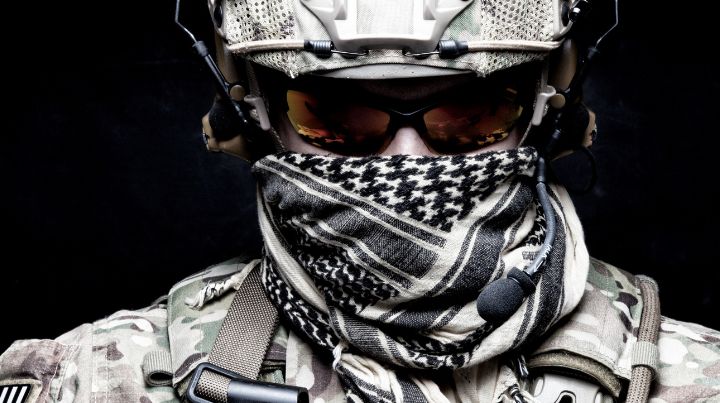
Shemagh scarves are a versatile and stylish piece of protective clothing that you can wear in various ways to protect from the elements and offer concealment.
They are available in many different colors and patterns, making them perfect for functional and fashion purposes. Shemaghs are the ideal accessory for anyone who wants protection from the elements while also looking good.
Now read this article to learn almost everything there is to know about the multitool of protective clothing, the shemagh.
What is a Shemagh?
The basic shemagh is a head scarf made of cloth that measures approximately 4′ x 4′ (1.2m x 1.2m). The scarf can be folded and manipulated to be worn in various ways around the head and neck.
A shemagh scarf is also known as a Keffiyeh, Gutrha, and various other names throughout the middle east and elsewhere.
Shemaghs are typically printed with a linear geometric pattern and bordered on the edges with many tassels. A shemagh can indicate tribal allegiance, political affiliation with Palestinian men, and other allegiances and causes.
What is the Purpose of a Shemagh
While it has many uses, which I’ll cover later in this article, the primary purpose of a shemagh scarf is as a piece of protective clothes.
Protective clothing protects the wearer from a harsh environment of sun, heat, cold, wind, sand, and so on.
What is the History of the Shemagh
The keffiyeh is thought to have originated in Mesopotamia, the home of Babylon, which is now modern-day Iraq.
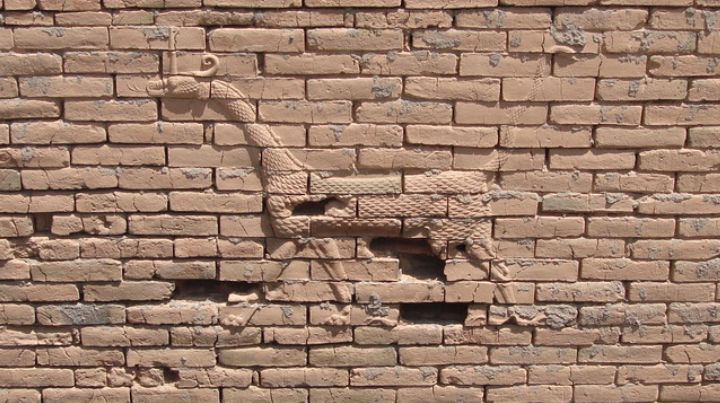
World War I & II
While the shemagh has been around for 100’s of years, it was World War I and the use by Arabs and Arab-based military personnel that moved the traditional head wrap into modern prominence.
One member of the military (photo below) who wore the keffiyeh during World War I was a British army officer, author, and archaeologist, T.E. Lawrence, also known as Lawrence of Arabia.
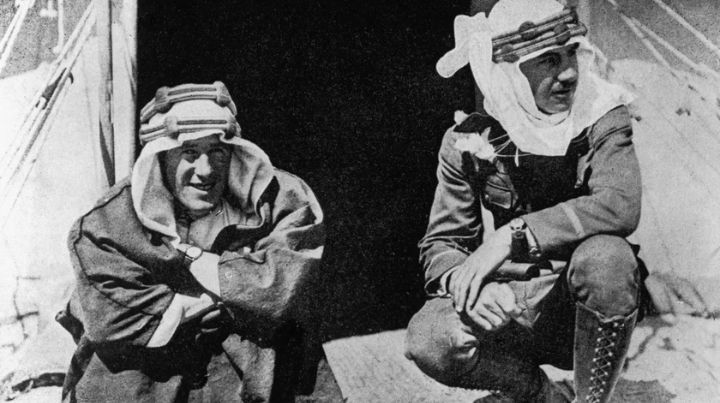
Another war, World War II, again increased the popularity of the keffiyeh. This time, units such as the British Special Air Service (SAS) and the Long Range Desert Group wore their shemaghs into battle and history.
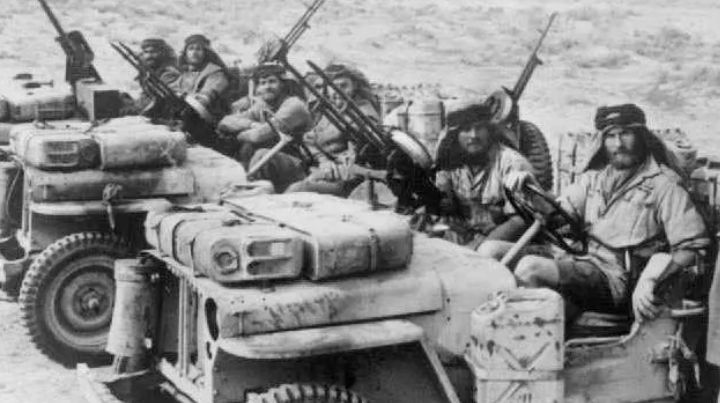
Jordan, Palestine, and Israel
Over time, wearing the keffiyeh head scarf became a tradition and symbol of solidarity with many Arab militaries and paramilitary forces such as Jordan and Palestinian Marxists.
Unfortunately, the shemagh, it was during this time that due to the conflict between Israel and Palestine, the media and others began associating the keffiyeh with terrorism.
Fashion Styles
Despite its ties to terrorism, the keffiyeh eventually caught on as a fashion trend, helping it gain broader acceptance in the west. That was until 2001.
The Keffiyeh Post 9/11
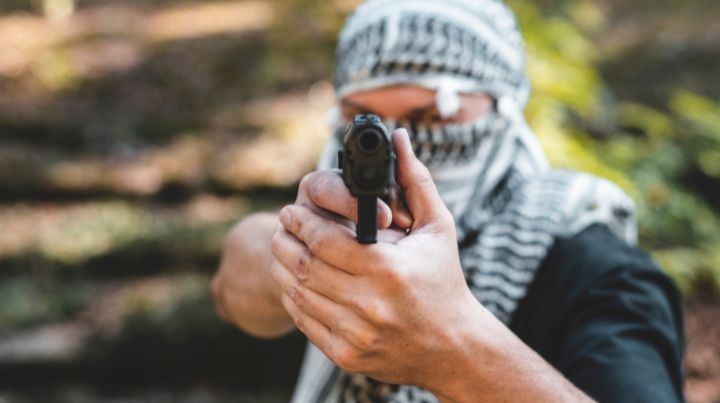
With the attacks of 9/11, the multitool of protective clothing became a symbol of terrorism and violence to many westerners.
However, as time passed and the conflicts in the middle-east raged, many soldiers, as did their WW1 & WW2 predecessors, began wearing the shemagh to protect themselves against the harsh desert environment.
Shemaghs and Self-Reliance
As post 9/11 soldiers began returning from overseas, the acceptance of the shemagh increased. In time due to its versatility, the headpiece became a staple piece of gear for many people.
Today, this soft fabric multitool of clothes and protection is widely accepted and used for everyday wear, emergency kits, and bug-out bags.
Uses and How to Fold Shemagh Scarves
Because they have so many uses, keffiyehs are considered the multitool of protective clothing.
Here are some of the uses of the shemagh:
Self-Defense
Improvised Shield: The long cloth can be wrapped around the arm to create a makeshift shield against slashing weapons.
Weapon: You can also wrap a heavy item, such as a rock in your shemagh, to create an improvised flail.
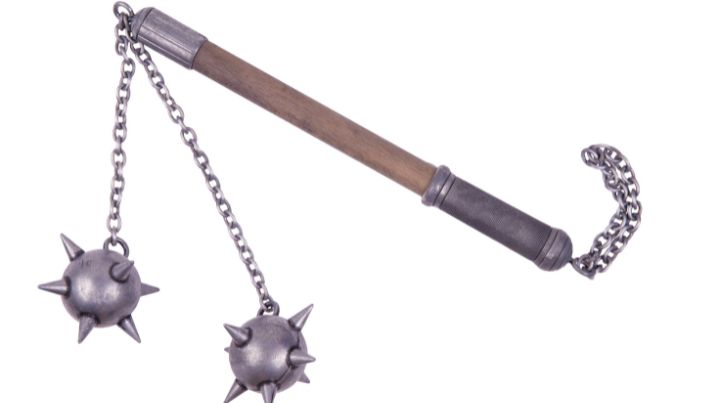
First Aid
Emergency Bandage: Like a triangular bandage, the keffiyeh scarf can be used as a field-expedient emergency bandage to staunch blood flow, dress open wounds, and secure other bandaging material.
Field Expedient Tourniquet: While a purpose-built tourniquet from a reputable dealer is the standard, with the proper training, in the wrong circumstances, an improvised tourniquet may be your best and only option to save a life.
Arm Sling: You can use your scarf, like a triangular bandage, as an improvised arm sling to secure an injured arm.
Splinting and Padding Material: Besides rigid splints, you will need something to secure and pad the splints, which is an excellent use of your keffiyeh.
Protection From the Environment
Sun Protection: When folded or hung correctly, the scarf can be configured to protect you or others from the sun’s intense rays.
Dust and Debris Protection: Anytime you’re in an area prone to wind, you’re more susceptible to eye injuries. Therefore, wearing a shemagh scarf as an eye mask is a great way to protect your eyes.
Here’s how to tie your keffiyeh into an eye mask:
Cooling: Besides protecting yourself from the sun and dust, shemaghs are great for keeping yourself cool and preventing overheating. You can do that by soaking your scarf and wearing it around your neck and over your head.
Sweat Wipe: Doing much of anything is a struggle when you have sweat pouring into your eyes. That’s no problem if you wear a keffiyeh.
Sarong: Wrap it right, and you can go from naked as a newborn to doing your best Pacific Island warrior impersonation.
Ground Covering: Your shemagh can be folded and filled with leaves to insulate you and make sitting on the rough ground a little more comfortable.
Warmth: While your scarf is not an adult-sized blanket, it will work as a lap covering or shawl to help keep your shoulders and back warm.
Fire, Food, and Water
Water Gatherer: You can gather water with a 4′ x 4′ piece of cotton. You can rub the cloth along grass and leaves and dunk it into the water to soak up as much H20 as it can absorb.
You then squeeze the water into your favorite container for purification and filtering.
Water Filter: Your cloth multitool also works well as a pre-filter for water. In my opinion, the best you should hope for when filtering with a keffiyeh is filtering down to the fifty-micron level.
As a filter, your cloth scarf can only filter some dust, pet dander, human hair, and possibly plant spores. (Source) Therefore, as your improvised filter does not remove viruses, bacteria, chemicals, and who knows what other methyl-kill-you-slowly-bad-stuff, it should not be thought of in terms of water purification.
Instead, think of survival scarves as filters that only remove the chunks that will gag you, not the small stuff that will kill you.
Fuel Filter: Not all fuel tanks are the same. Some rust and have other chunks of kill-your-engine in the middle of the road floating in it. Therefore, if you’re unsure about the gas you may be forced to pour into your tank, pour it in through your shemagh, and just like water, filter out the chunks.
Note: Don’t forget, after you use your shemagh as a fuel filter, DO NOT put it back on around your neck or head. Please!
Pot Holder: A keffiyeh can be used as an improvised pot holder. However, using it near an open flame is not a great option. It is, after all, a thin piece of cotton and can combust. So, if you decide to use it as a pot holder, do so carefully and ensure you don’t have any dangling bits that will spontaneously set your world on fire.
Field Use
Improvised Bag / Sack: Take on the mindset of the hobos of old and turn that cloth you have around your neck into the sack that’s carrying your next meal.
Towel: No, it’s not a plush, high-end hotel towel. And with a little effort, your keffiyeh can dry you off reasonably well.
Concealment: With the variety of patterns and colors available, you can find a shemagh that will hide your position or things.
Signaling: If a waving a 4′ x 4′ piece of bright cloth can’t attract a rescuer’s attention, you better have a flare gun ready.
How to Choose the Right Shemagh
When purchasing a shemagh, it is crucial to consider the climate in which you will wear it.
For example, if you are planning to wear it in a hot desert climate, you will want to choose a light-colored material that will reflect heat. If you are planning to wear it in a cold mountain climate, you will want to choose a heavier fabric that will provide insulation.
It is also essential to consider the pattern of the fabric. Are you looking for something traditional, fashionable, or tactical?
Next, do your due diligence and research into finding the best cloth multitool-fashion accessory possible.
Frequently Asked Questions about Shemaghs
How to Wash a Cotton Shemagh
Wash a cotton shemagh in cold water and, without wringing it out, spread it out to hang over a branch, drying rack, clothesline, etc.
Will a Shemagh Keep You Warm During the Winter?
A shemagh is a thin piece of cloth. It can function as a neck gator or balaclava for warmth when folded correctly.
Will a Shemagh Protect Me From the Sun
A shemagh is a great way to keep the sun off your head and neck. As a shemagh is lightweight, it breaks up sunlight while allowing some air to circulate, helping to keep you cool.
Is a Shemagh Sandproof
Most Shemaghs will provide some filtration protection from sand and dust. However, the effectiveness is dependent upon the thickness of each shemagh, with thicker brands being more effective.
The Bottom Line About Shemaghs
!Shemaghs have been used for centuries and are still popular today. They are versatile pieces of cloth you can wear in many different ways. The best way to choose the right shemagh is to consider your needs and preferences and to do your research.
What are your thoughts on the use of shemaghs? Tell us in the comments below!
Additional Resources:
- Amazon Shemaghs for Sale
- FREE Bug Out Bag Essentials Guide!
- Best Fixed Blade Knives Review and Guide
- Personal Risk Assessment Information
Stay safe,

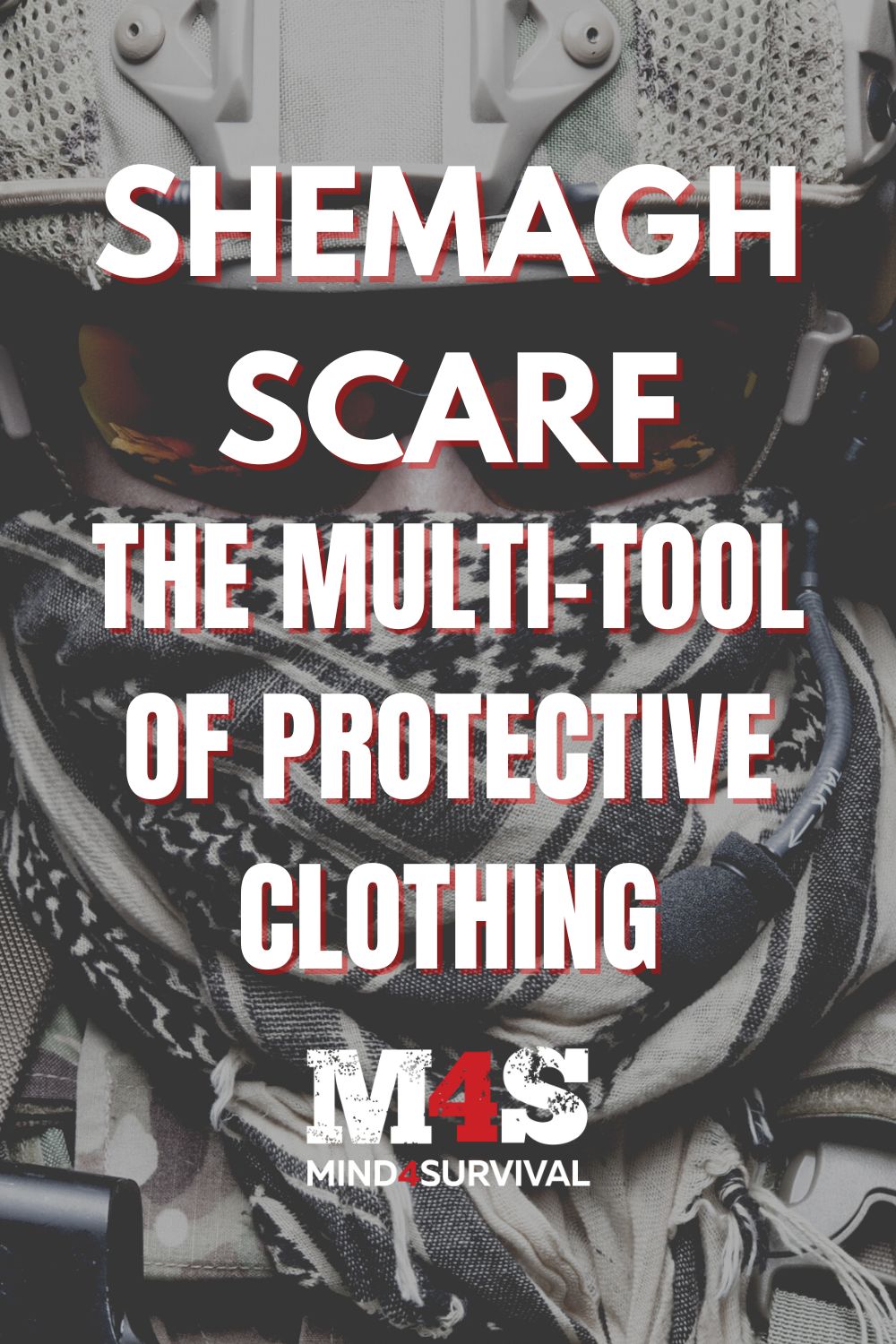
Don't Miss Out!
Join the thousands of people who rely on Mind4Survival preparedness advice by subscribing to our FREE newsletter.
- Practical preparedness information
- Zero Spam
- < 0.25% of people unsubscribe




Join Mind4Survival!
Stay informed by joining the Mind4Survival! 100% Secure! 0% Spam!
Follow Us!
Affiliate Disclosure
Mind4Survival is a free, reader-supported information resource. If you make a purchase through our link, we may, at no cost to you, receive an affiliate commission.




The part after “Here’s how to tie your keffiyeh into an eye mask:” is missing.
Good article.